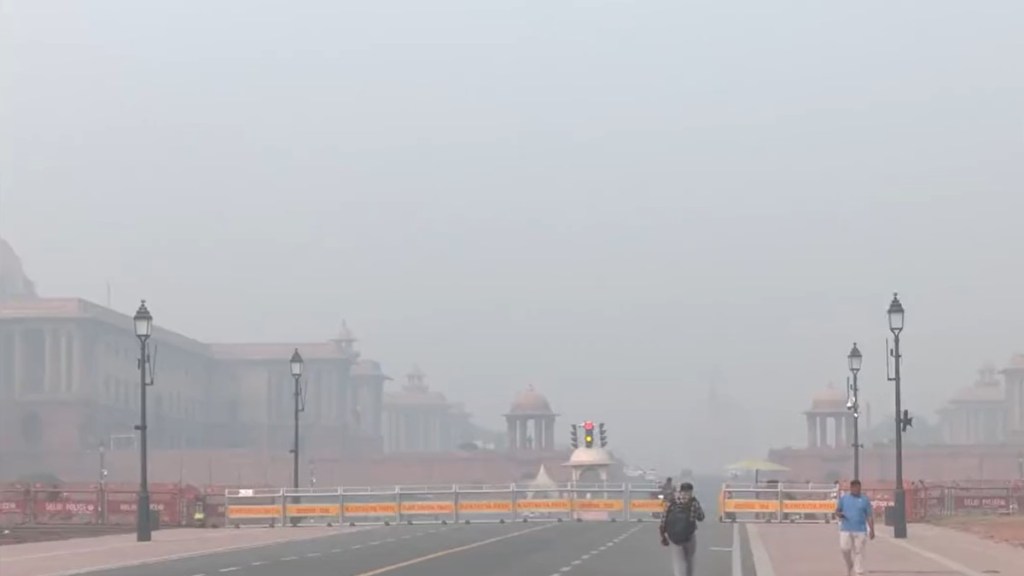The overall air quality in Delhi once again plummeted to the ‘severe’ category on Wednesday morning, a day after the national capital saw a slight improvement in the air quality and was classified as ‘very poor.’ The city’s overall air quality index (AQI) stood at 421 at 7 am, according to data from the Central Pollution Control Board (CPCB).
Nearly all monitoring stations, except a few like Lodhi Road, JLN Stadium, Siri Fort, Aurobindo Marg, and Dilshad Garden, reported an AQI in the ‘severe’ category.
Several areas, including Anand Vihar, Dwarka, Shadipur, Mandir Marg, ITO, R K Puram, Punjabi Bagh, North Campus, Mathura Road, Rohini, Patparganj, Okhla, India Gate, and Mundka, recorded an AQI above 400 at 6 am.
Anand Vihar recorded an AQI of 452, RK Puram at 433, Punjabi Bagh at 460, and ITO at 413. In the National Capital Region (NCR), Greater Noida had the ‘most polluted’ air with an AQI of 474, while Noida, Ghaziabad, Gurugram, and Faridabad had air quality in the ‘very poor’ category at 6 am.
Various factors, including vehicular emissions and stubble burning, are contributing to the air pollution in Delhi.
Authorities have raised the pollution alert to the highest level and invoked Stage 4 of the Graded Response Action Plan (GRAP), leading to the banning of diesel trucks and construction activities in the national capital.
The odd-even rule, which restricts vehicular traffic based on registration numbers, will be implemented for a week following Diwali.
However, the Supreme Court on Tuesday criticized the Delhi government’s odd-even scheme, calling it “mere optics” without substantial impact. The court questioned whether the government had evaluated the scheme’s effectiveness in previous years, emphasizing that such measures often focus on appearances rather than tangible results.
The court also urged the government to regulate the entry of “orange-tagged” vehicles, typically polluting diesel cars and taxis from other states, into the national capital.
What is the Air Quality Index (AQI)?
The Air Quality Index (AQI) is a vital tool for effectively communicating air quality status to the public in an easily understandable manner. It consists of six AQI categories: Good, Satisfactory, Moderately Polluted, Poor, Very Poor, and Severe.
Each category is determined based on the levels of ambient concentrations of air pollutants and their potential health impacts, known as health breakpoints. According to the AQI scale, air quality falls into the following ranges: 0 to 50 is ‘good,’ 51 to 100 is ‘satisfactory,’ 101 to 200 is ‘moderate,’ 201 to 300 is ‘poor,’ 301 to 400 is ‘very poor,’ and 401 to 450 is ‘severe.”

